![]()
Introduction: English
Hungarian confectionary cake traditions are modern, most being invented in the last 150 years. These cakes are much celebrated, and local cukrászda (cake shops) are favourite places for people to go. In the cukrászda famous cakes such as Dobos torta and Rákóczi túrós are offered alongside less well-known but equally delicious varieties. The more traditional and rather filling savoury flatbread called lángos and the very sweet and crispy kürtőskalács, originally from Transylvania, are available from kiosks on street corners. Bread is usually bought fresh every day on the way home from work, while cheese, potato or pork crackling flavoured scones, pogácsa, are still often baked at home.
Introduction: Hungarian
A cukrászati hagyományok főként modernkoriak: a cukrászsütemények nagy részét az elmúlt 150 évben találták fel! Magyarország cukrászsüteményei világhírűek; a helyi cukrászdákba előszeretettel járnak az emberek. Itt fogyasztásra kínálják mind a hírneves süteményeket, mint például a Dobos tortát és a Rákóczi túróst, mind kevésbé ismert, de hasonlóan ízletes társaikat. Kint az utcán sok helyen fogyaszthatunk a hagyományos és laktató lángosból vagy akár a nagyon édes és ropogós, Erdélyből származó kürtőskalácsból. A kenyeret általában frissen veszik az emberek minden nap, munkából hazafelé; sajtos, krumplis és tepertős pogácsát pedig még mindig gyakran otthon sütnek.
Hungarian
Az egyik kedvenc süteményem odahaza a mézes krémes, ami a krémeshez hasonlít, de vaníliás töltelék helyett mézes tésztával készül: ez egyszerű, de mégis igen elegáns ízt idéz elő. A gyermekkori otthonom közelében lévő kis cukrászdában kitűnő mézes krémest készítenek még ma is.
English
One of my favourite cakes back home is mézes krémes. This cake is similar to krémes, but instead of vanilla filling it's made with honey flavoured pastry. The result is a taste which is simple yet very delectable. The local cukrászda near my childhood home bakes excellent mézes krémes even today.
Image: OctopusHat under Creative Commons license
Dobos torta
Dobos torta is Hungary’s most famous cake. It was invented in 1884, and it’s made of thin layers of sponge cake alternating with rich chocolate butter cream. The top layer is covered with hardened caramel – delicious, even if tough to crack with a dessert fork!
Image: Bruce Tuten under Creative Commons license
Kürtőskalács
Kürtőskalács is a traditional sweet pastry, originating from Transylvania and known in English as 'chimney cake'. The pastry is wrapped round a cylinder and baked over an open fire, using lots of sugar to create a delicious crispy surface. These tasty sweet pastries are most often flavoured with cinnamon, walnuts or coconut, and they’re especially popular at winter fairs.
Image: © iStockphoto
Pogácsa
Pogácsa is a savoury scone that is very popular as an everyday snack in Hungary. It’s made of dough, sometimes through a long process of repeated folding, which then results in a very finely layered texture. Traditionally pogácsa is flavoured with cheese, potatoes or pork crackling before baking.
Image: © Gergely Király
Krémes
Krémes means creamy in Hungarian. This delicious patisserie cake is similar to a vanilla slice and it’s one of the most popular cakes in Hungary.
Real vanilla pods are used to make the vanilla egg custard which is then encased in rich sweet puff pastry.
Image: © Gergely Király
Fehér kenyér
Fehér kenyér translates simply as white bread.
It’s made of 100% wheat flour in 1 kg pieces, and is the preferred choice of bread in most Hungarian households. It is usually picked up fresh daily from the supermarket - much like milk is in Britain!
Image: © Gergely Király
Fonott kalács
Fonott kalács is a sweet bread similar to brioche, only larger. It's sliced like bread and commonly eaten for breakfast, with sweet accompaniments such as jam or chocolate spread.
Sometimes, especially during Easter, it’s consumed with savoury things like ham, boiled egg and radish.
Image: HatM under Creative Commons license
Lángos
Lángos translates from Hungarian as 'flamed'.
It’s a traditional deep-fried flatbread, offered as a cheap and filling dish at fast food outlets. Lángos is especially popular at lakesides and open air swimming pools in the summer. It's usually dressed with garlic and served with further accompaniments, such as sour cream and cheese.
Image: Zsoolt under Creative Commons license
Somlói galuska
Somlói galuska is a very popular sweet dish served in Hungarian cake shops and restaurants.
It's a kind of chocolate trifle, made of vanilla, walnut and chocolate flavoured sponge cake, topped with vanilla custard, chocolate sauce, walnuts, raisins, rum and whipped cream.
Image: Zsoolt under Creative Commons license
Rákóczi túrós
Rákóczi túrós is a Hungarian speciality cake. It’s made of shortcrust pastry, topped with sweet cottage cheese and finished with a layer of meringue and apricot jam.
This delicious cake became famous after its introduction at the Brussels World Fair in 1958.
Image: © Gergely Király
Kakaós csiga
Kakaós csiga is a popular pastry available in every Hungarian bakery, but it’s even more delicious home-baked. It’s filled with cocoa and twisted around in the shape of a snail's shell before baking, making it many children’s favourite.
Kakaós csiga was invented by a Hungarian confectioner in 1908, to celebrate his 33rd birthday!
Image: © Gergely Király
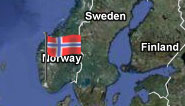
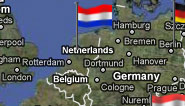
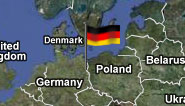
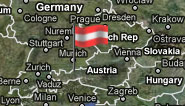
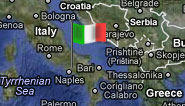
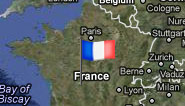
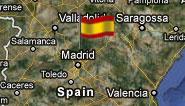

Rate and Review
Rate this activity
Review this activity
Log into OpenLearn to leave reviews and join in the conversation.
Activity reviews